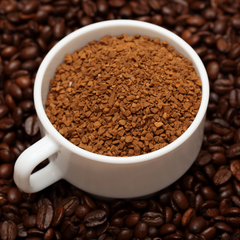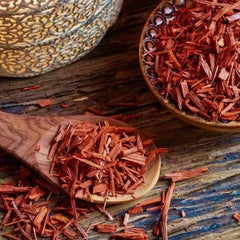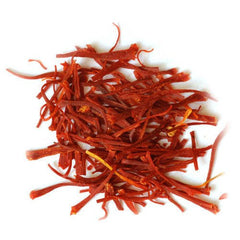What Makes a Perfume Floral?
Click For Affordable Inspired Perfume Alternatives
Perfume is an art form that captures the essence of nature, emotion, and personality in a single bottle. Among the many fragrance families, floral perfumes stand out for their timeless elegance and captivating aromas. They evoke feelings of freshness, femininity, and romance, making them some of the most popular choices worldwide. But what exactly makes a perfume floral? Is it the ingredients, the scent composition, or something more subtle? In this article, we will explore the defining characteristics of floral perfumes, what ingredients create these enchanting fragrances, and how to identify a truly floral scent.
What Makes a Perfume Floral?
At its core, a floral perfume is characterized by the prominent presence of flower-based notes. These notes can be derived directly from natural flowers or created synthetically to mimic their scent. The essence of a floral perfume lies in its ability to evoke the delicate, fresh, and often romantic qualities associated with flowers. To understand what makes a perfume floral, we need to delve into the ingredients, scent structures, and the overall composition that define this fragrance family.
The Key Ingredients of Floral Perfumes
Floral perfumes are primarily crafted using a variety of flower extracts, essential oils, and aromatic compounds. These ingredients are carefully blended to produce a harmonious and balanced scent profile. Here are some of the most common ingredients that contribute to floral fragrances:
- Natural Flower Extracts: Directly derived from flowers such as jasmine, rose, gardenia, ylang-ylang, lily, and tuberose. These provide authentic floral aromas that are rich and complex.
- Essential Oils: Concentrated oils obtained through distillation or solvent extraction, capturing the true scent of flowers.
- Absolute Oils: Highly concentrated extracts obtained through solvent extraction, often used for delicate flowers like jasmine and rose.
- Synthetic Aromatic Compounds: Man-made ingredients like lily aldehyde or phenyl ethyl alcohol that replicate floral scents, often used to enhance or extend natural notes.
These ingredients are combined in varying proportions to create different types of floral perfumes, from fresh and light to rich and opulent.
Types of Floral Perfumes
Floral fragrances are diverse, and their classification depends on the dominant flower notes and the scent structure. Here are some common types:
- Single-Floral (Soliflore): Focuses on one flower, such as rose or jasmine, highlighting its unique character. Example: Dior's Miss Dior Blooming Bouquet.
- Floral Bouquet: Combines multiple floral notes to create a harmonious blend. Example: Chanel No. 5.
- Fresh Floral: Light, crisp, and often citrusy or green, perfect for daytime wear. Example: Marc Jacobs Daisy.
- Oriental Floral: Rich, warm, and often with spicy or woody undertones. Example: Yves Saint Laurent Opium.
- Green Floral: Incorporates fresh, leafy, and grassy notes to evoke a garden-like scent. Example: Chloe Eau de Parfum.
How Floral Notes Are Perceived in Perfume
The perception of floral notes depends on their placement within the fragrance's scent pyramid. A typical perfume has three layers:
- Top Notes: The initial impression, often light and fresh floral scents like citrus or budding flowers.
- Heart (Middle) Notes: The core of the perfume, where the main floral characters like rose, jasmine, or lily blossom fully. These notes define the perfume's character.
- Base Notes: The lingering foundation that supports the floral core, often woody or musky, adding depth and longevity.
In floral perfumes, the middle notes are usually the most prominent, creating a bouquet that unfolds over time. The balance and harmony among these layers determine whether a perfume is perceived as truly floral or not.
What Makes a Perfume Truly Floral?
While many fragrances contain floral notes, not all are classified as floral perfumes. The defining factors include:
- Dominance of Floral Ingredients: The floral notes should be prominent and recognizable in the scent profile.
- Authenticity of the Floral Aroma: Use of high-quality natural extracts or well-crafted synthetics that faithfully replicate flower scents.
- Harmonious Composition: The floral notes should blend seamlessly with other ingredients, creating a balanced and pleasing fragrance.
- Evocative of Flowers: The overall impression should evoke the essence of flowers—fresh, romantic, delicate, or lush.
For instance, a perfume labeled as a “floral” should prominently feature recognizable floral notes like rose, jasmine, or lily, rather than just having a hint of floral aroma tucked away among other scent families.
The Role of Artistic Composition in Floral Perfumes
Creating a floral perfume is both a science and an art. Perfumers meticulously select and blend ingredients to evoke specific moods or themes. For example:
- Romantic Floral: Focused on lush, heady blooms like jasmine and rose, often with rich base notes.
- Fresh Floral: Emphasizes bright, airy floral notes combined with citrus or green elements for a lively scent.
- Exotic Floral: Incorporates rare or tropical flowers like ylang-ylang or frangipani for a unique aroma.
The art of balancing these elements ensures that the floral perfume is captivating, complex, and suited to the wearer’s personality and occasion.
Tips for Choosing a Floral Perfume
If you're interested in exploring floral fragrances, here are some tips to help you select the perfect scent:
- Identify Your Preferred Floral Notes: Do you love the romantic scent of rose, the exotic aroma of jasmine, or the fresh scent of lily?
- Consider the Occasion: Light, fresh floral perfumes are ideal for daytime or casual wear, while richer florals suit evening or formal events.
- Test Before Buying: Spray fragrances on your skin and let them develop over time to see how the floral notes unfold.
- Check the Scent Pyramid: Ensure that the floral notes are prominent in the heart of the fragrance for a true floral experience.
Conclusion: The Enduring Charm of Floral Perfumes
In essence, what makes a perfume floral is the prominent use of flower-based ingredients that evoke the beauty and delicacy of blossoms. From natural extracts to synthetic recreations, the artistry involved in crafting floral fragrances allows for endless creativity and expression. Whether you prefer the simplicity of a single-flower soliflore or the complexity of a floral bouquet, these perfumes continue to enchant and inspire. Their timeless appeal lies in their ability to capture the essence of nature’s most beautiful creations, making them a staple in any fragrance collection. When choosing a floral perfume, pay attention to the ingredients, scent structure, and your personal connection to the aroma—because a truly floral fragrance resonates with the soul as much as it pleases the senses.
Buy Perfumes - Best Online Retailers
Click For Affordable Inspired Perfume Alternatives
Click For The Best Niche Perfumes & Decants
Pheromone Perfumes - Confidence, Attraction & Appeal - Click For More
Home Fragrances & Candle Warmers - Click To Scent Up Your Spaces Today!



